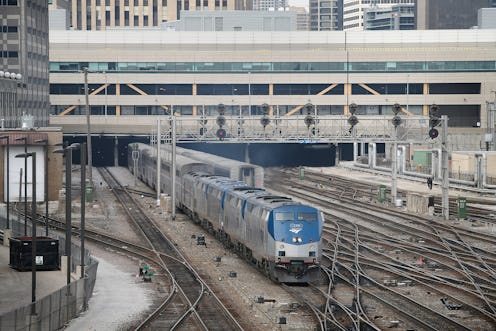News
After Crash, Amtrak Boosts Safety Measures
After the Federal Railroad Administration (FRA) ordered immediate safety improvements along stretches of the Northeast Corridor, Amtrak was installing new speed controls Sunday on the section of the track where one of its trains suffered a fatal derailment. Train 188 was traveling from Washington D.C. to New York when it crashed after entering a sharp corner at double the speed limit outside Philadelphia Tuesday night. Eight people were killed in the derailment, which has sparked a full investigation and much criticism of the state of Amtrak’s safety equipment.
The FRA's Saturday statement detailed a number of safety measures that Amtrak was instructed to implement. This package included installing a speed-control system, known as automated train control (ATC), along the rails in the crash area, as well as assessing the risk of track curves and increasing speed limit signage in the Northeast Corridor — America’s busiest rail network. In a statement released on Saturday, Amtrak said its “overarching goal is to provide safe and secure rail passenger travel. We will immediately implement the Federal Railroad Administration’s directives to further improve passenger train safety along the Northeast Corridor.”
Although the exact cause of the crash is not yet known, the investigation has so far centered on examining why the train had accelerated to over 100 mph in the moments leading up to the crash (in a track section with a speed limit of 50 mph). New evidence came to light Friday, indicating that a projectile may have hit the train before its deadly crash. The FRA acted quickly to bolster Amtrak’s safety in the vicinity of the crash site — with further measures pending a firm conclusion to the investigation.
“The actions we have instructed Amtrak to take are aimed at improving safety on this corridor immediately,” Transportation Secretary Anthony Foxx said in a Saturday news release, “but we won't hesitate to require the railroad to do more to improve safety as the accident's causes become clearer.”
CNN reports that Amtrak was spending the weekend installing the ATC system, in the hope that train service in the Northeast Corridor could be back at full capacity by Monday or Tuesday. ATC is designed to detect when a train accelerates beyond the speed limit, and then send a signal to the engineer. If that warning produces no human-generated result, the system will automatically apply the brakes. Although this technology was installed in the 1990s along the crash-site rail section for Philadelphia-bound trains, New York-bound trains had no such safety net in place.
Once installed, the system will ensure that New York-bound trains (such as the one that crashed Tuesday) will enter the track’s curve at 45 mph, Amtrak’s Saturday statement stipulated. The company also pledged to identify dangerous curves and implement technological improvements on them, as well as to put up more signs announcing the speed limit. Of the latter, FRA said: “Increasing the amount and frequency of signage provides a redundant means to remind engineers and conductors of the authorized speed.”
One safety feature not mandated by the FRA's Saturday order is positive train control (PTC) — an automated emergency breaking system like ATC, but a more robust and sophisticated accident-avoidance system than the latter. National Transportation Safety Board member Robert Sumwalt highlighted the PTC’s importance Wednesday. “Based on what we know right now, we feel that had such a system been installed in this section of track, this accident would not have occurred,” he said.
While PTC is installed on some stretches of the Northeast Corridor, according to NPR, it is not in place on the stretch of track where the crash occurred. Amtrak has made clear that it hopes to change that. The rail group’s Saturday statement added that it was “also reviewing whether it can partially activate some of the capabilities of the Advanced Civil Speed Enforcement System [an element of PTC] … components already installed in the Northeast Corridor. Amtrak will evaluate whether such an option can be undertaken without delaying the complete activation of PTC in the Northeast Corridor later this year.”
In fact, federal regulators have ordered that PTC be universally installed by the end of 2015 — although there are suggestions that that deadline, for the most part, won’t be met. But Amtrak has already spent $110 million to install the system since the technology was mandated in 2008, and says it is on schedule to have the technology up and running by the end of the year.
In the meantime, at least, Amtrak’s quick response to FRA orders presaged an immediate safety boost for the crash-site track area. “Passenger railroading is at its core about people,” Joe Boardman, president and CEO of Amtrak, wrote in an email to customers Saturday. “[T]he safety of our passengers and employees was, is and always will be our number one priority. Our goal is to fully understand what happened and how we can prevent a similar tragedy from occurring in the future.”
Images: Getty Images (3)
